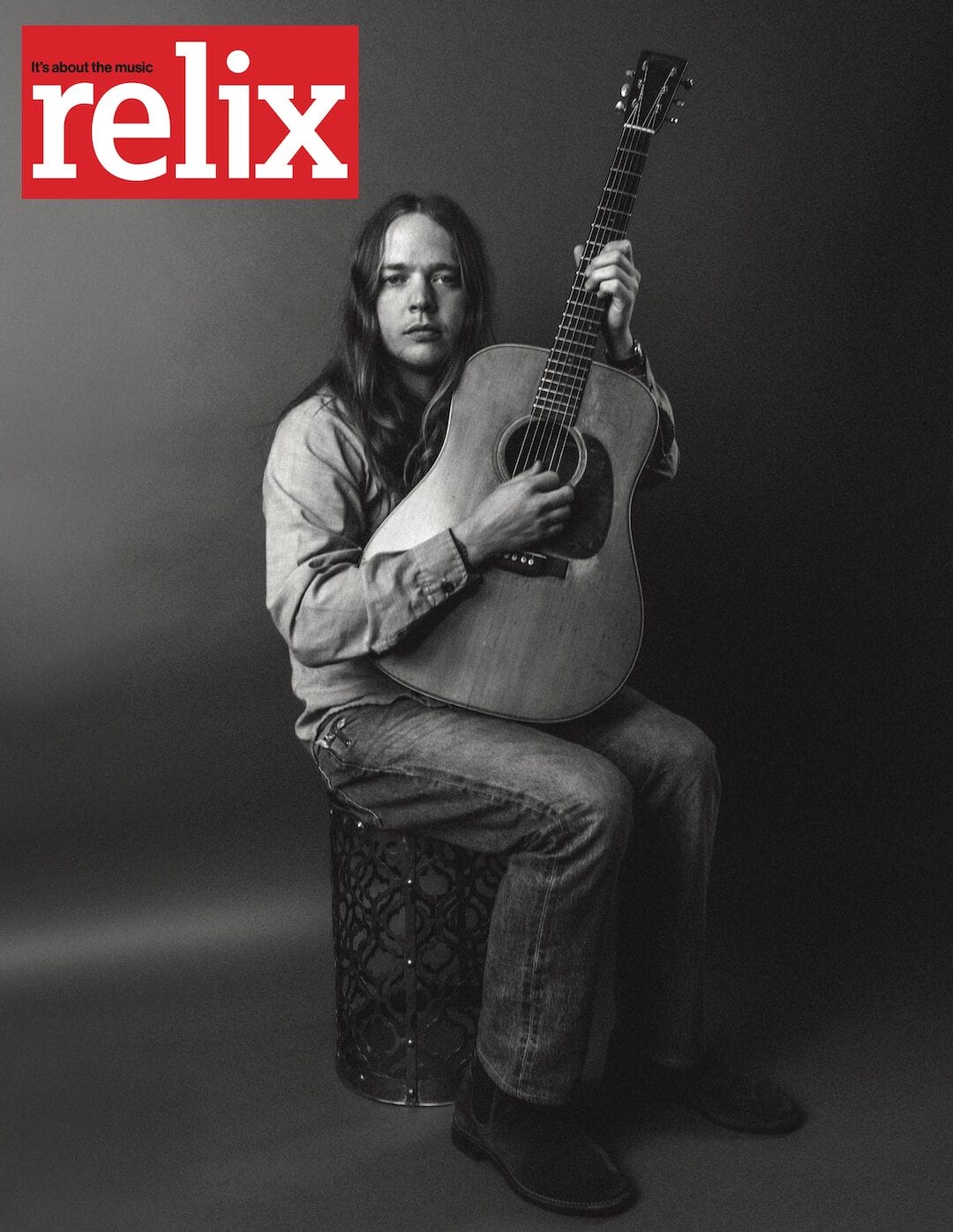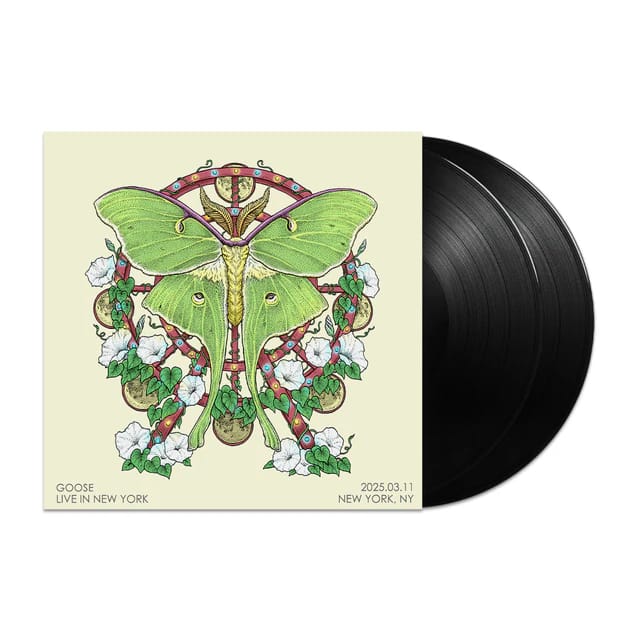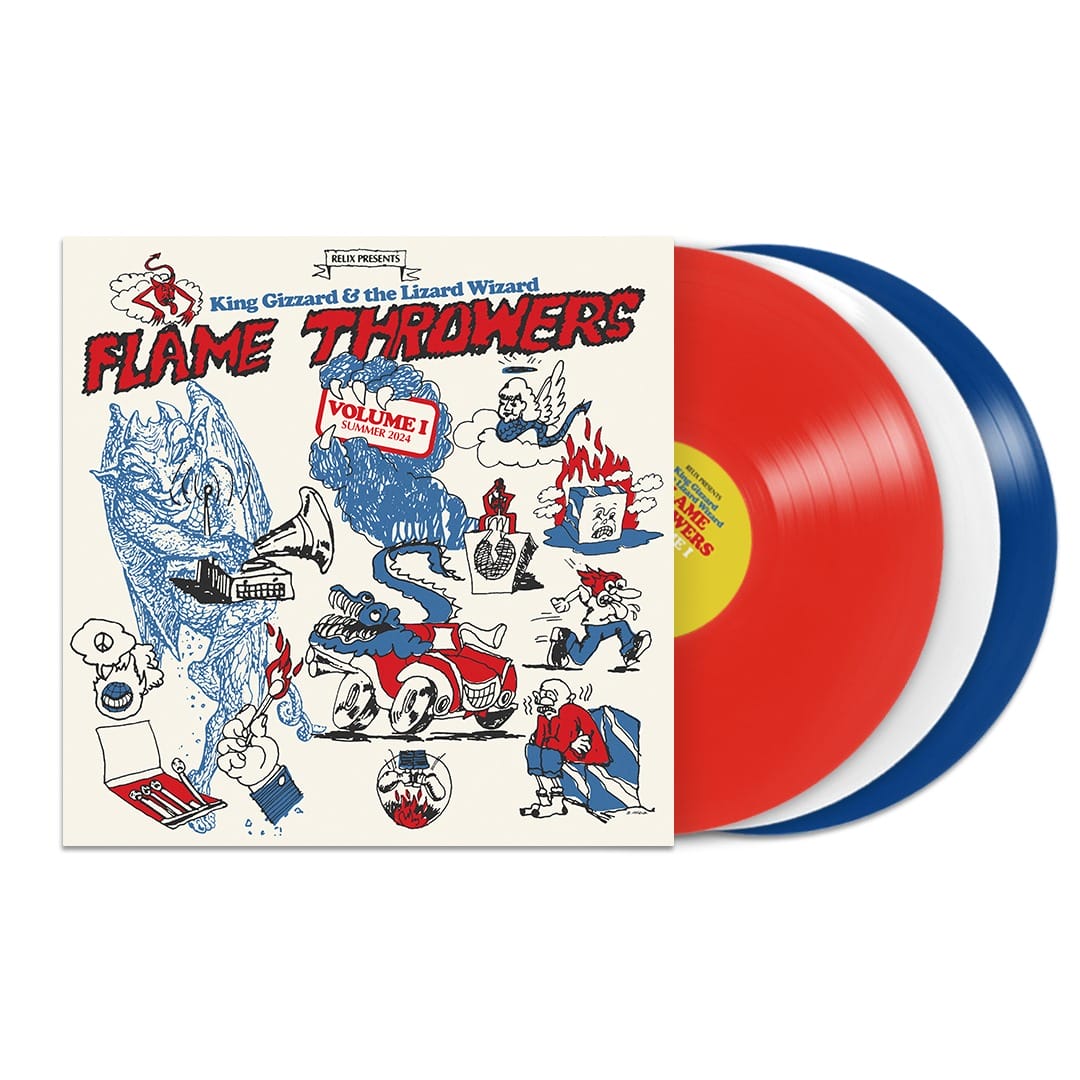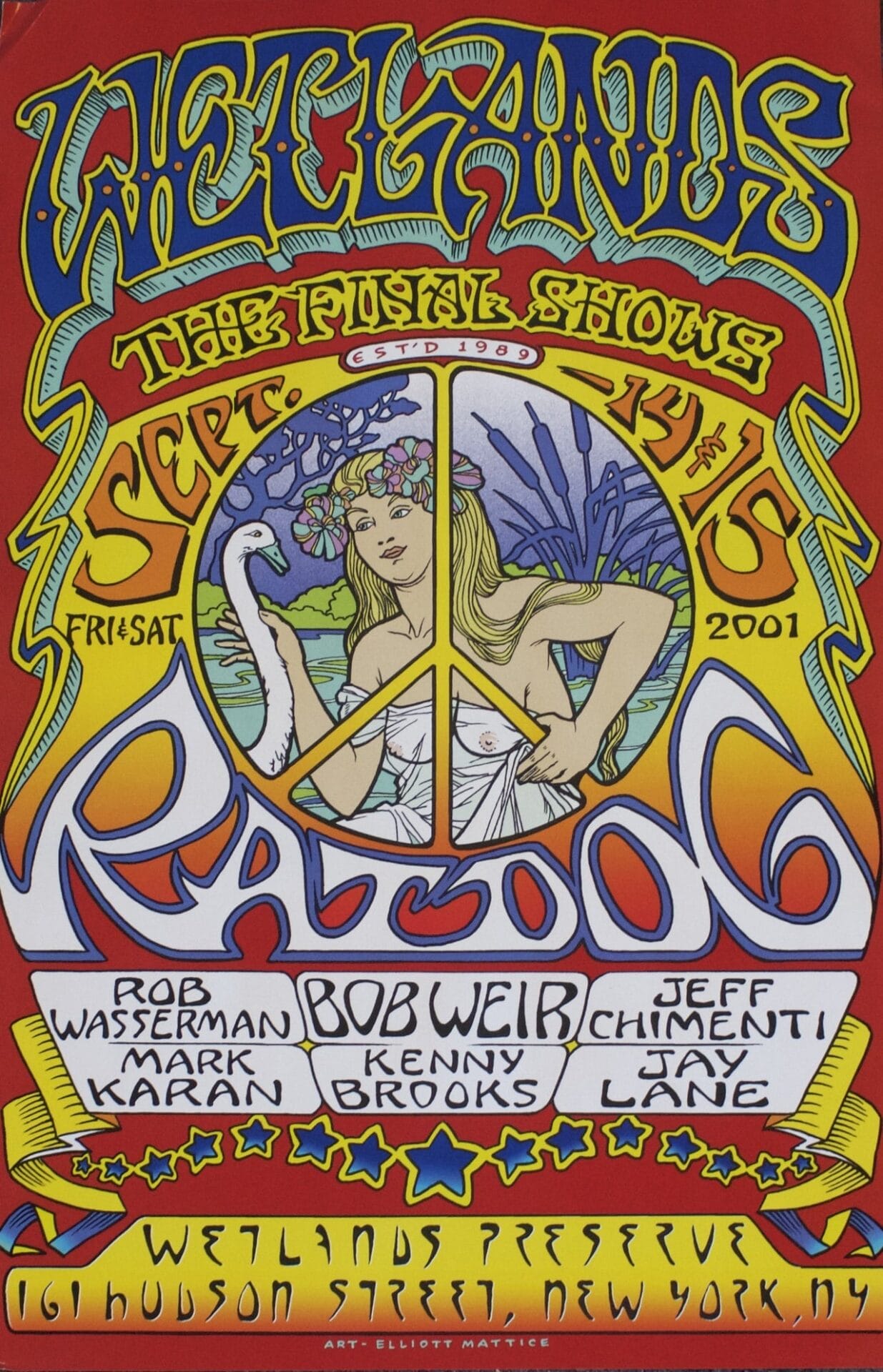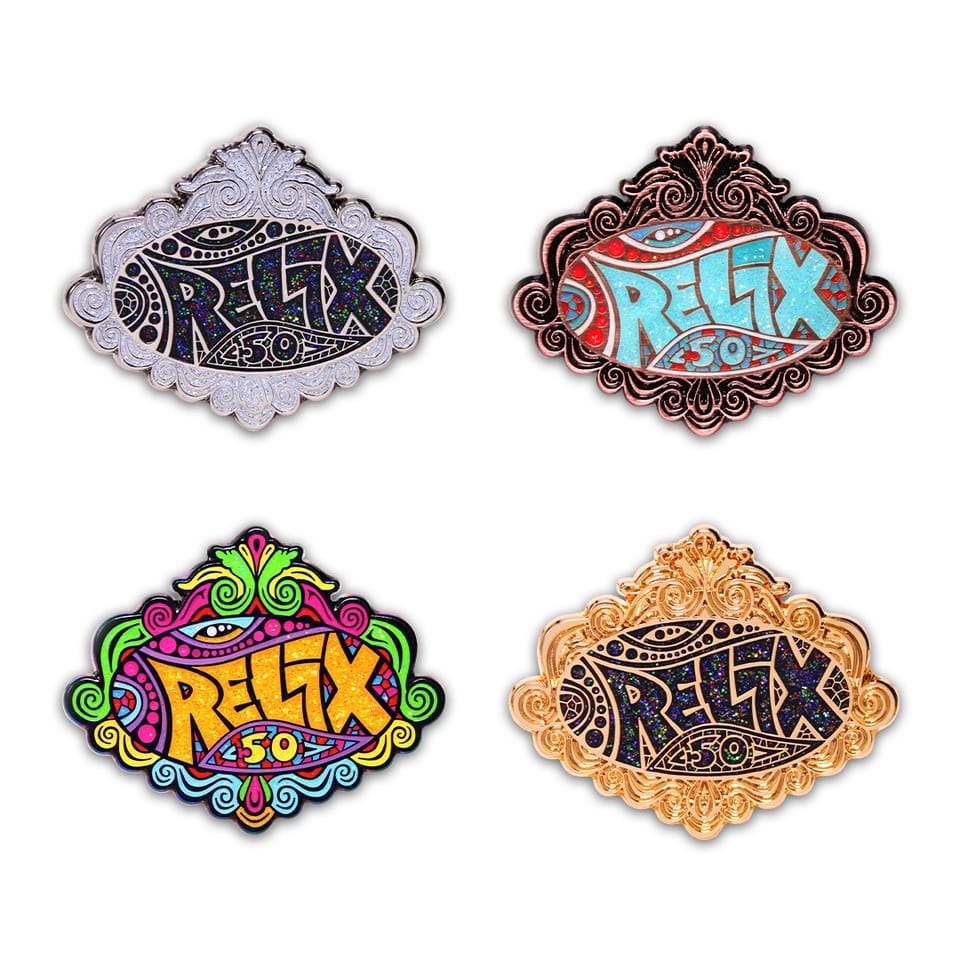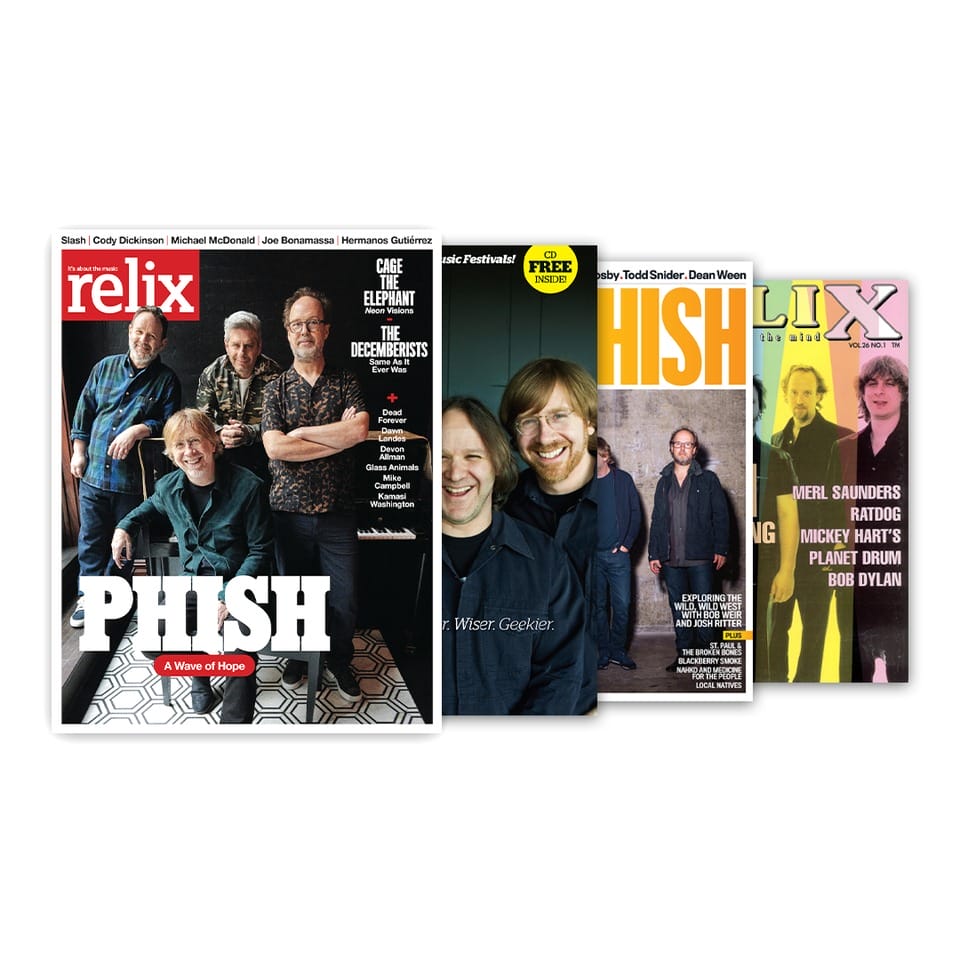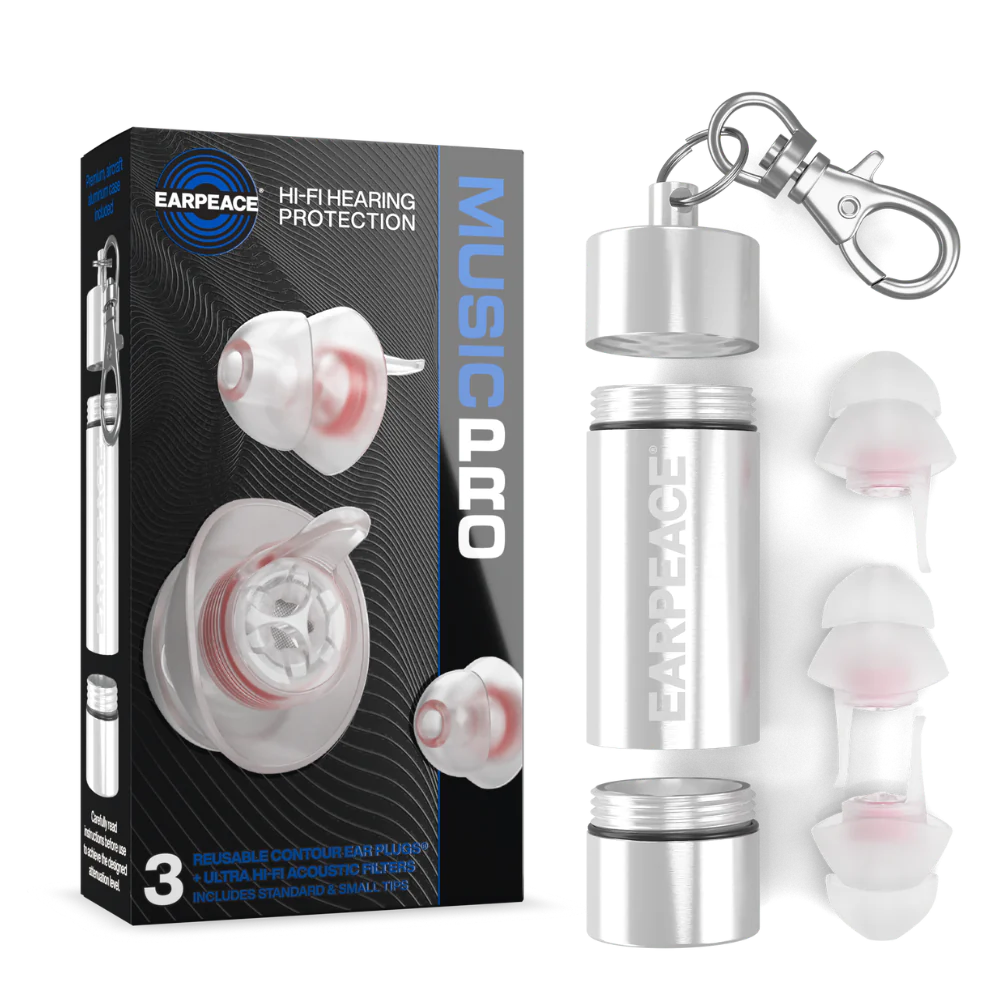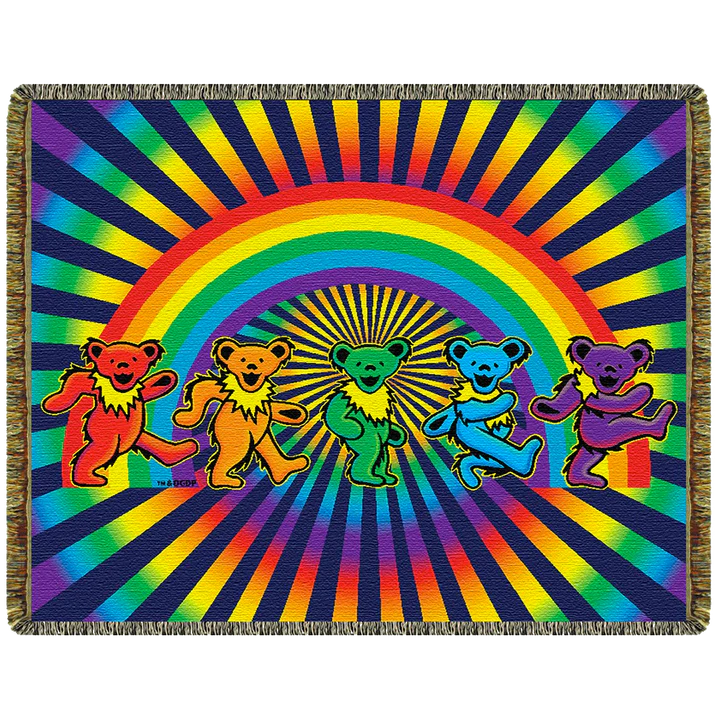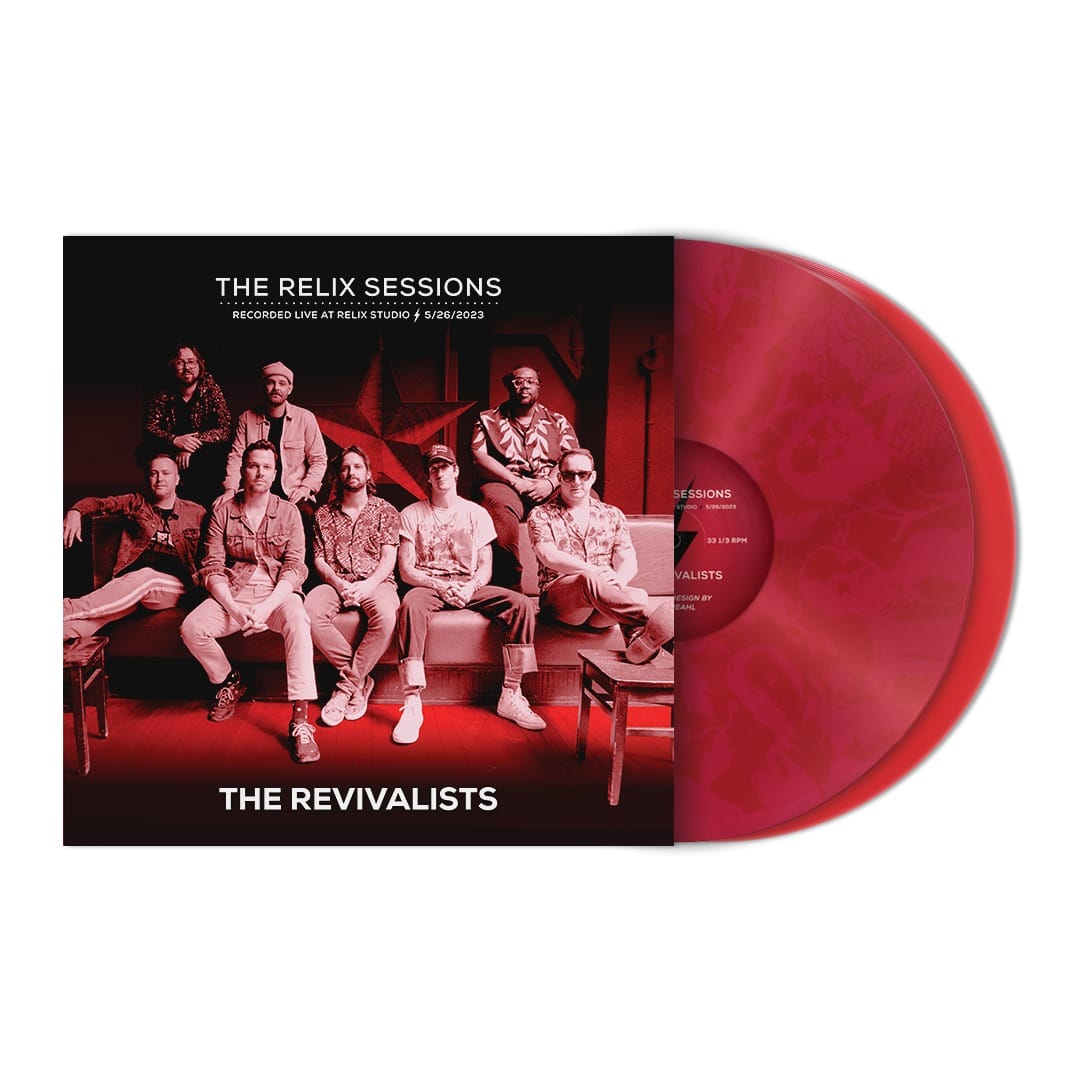Mt. Joy: There’s Room for Everybody
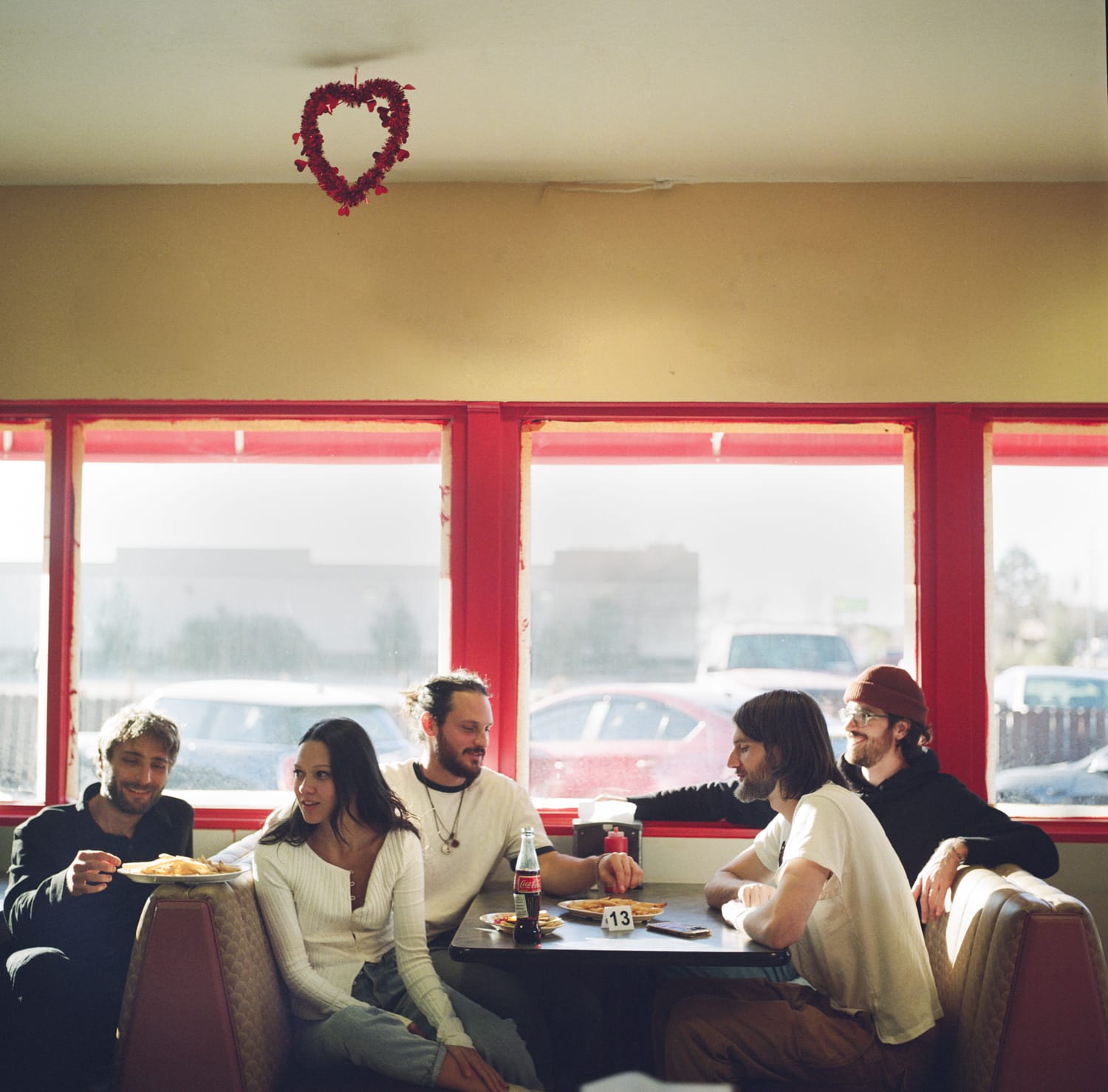
At around 3:30 p.m. on April 13, Philadelphia-based indie-folk heroes Mt. Joy announced on their Instagram account that they were playing a pop-up show at local beer garden Frankford Hall. By 5 p.m., hundreds of fans, bundled up to brave the chilly spring day, had flooded the bar to capacity. Beer steins and Jenga blocks filled the tables. Hundreds more fans lined up along Frankford Avenue— stopping traffic on the busiest street in Philly’s popular Fishtown neighborhood.
And that’s about when Mt. Joy did the most Mt. Joy thing they could do: They climbed atop a white pickup truck parked outside the bar and began to strum their most beloved song, “Silver Lining.” The crowd drowned out singer Matt Quinn’s voice and guitar on the chorus: “Tell the ones you love you love them.”
In a city infamous for flood-the-streets celebrations that turn into chaos, this was about the gentlest traffic jam you could imagine.
Back inside Frankford Hall, fans snapped up new merch—a T-shirt sporting the logo of Wawa, the gas station and made-to-order sandwich shop with a cultish following in Pennsylvania, and the impossible-to-prove-but-easy-to-believe text, “Mt. Joy knows hoagies.”
As the sun began to set, the group—Quinn, guitarist Sam Cooper, percussionist Sotiris Eliopoulos, keyboardist Jackie Miclau and bassist Michael Byrnes—led the crowd inside Frankford Hall in sing-along after sing-along, plus a handful of new tunes from Mt. Joy’s fourth LP, Hope We Have Fun.
The band was made for moments like these. On the strength of Quinn’s thoughtful lyrics and perpetually hummable melodies, Mt. Joy makes music that feels good. It’s not fussy, hyper-specific or overcomplicated. It’s music that’s easy to love, quick to memorize and beautifully open-hearted.
And Hope We Have Fun is Mt. Joy’s gambit to spread their infectious folk rock—with more emphasis on the rock this time out—to bigger audiences than ever. That’s no small task; just last year, the band sold out Madison Square Garden, and they’ve been steadily growing for a decade. Hope We Have Fun presents 13 tracks that stretch the edges of Mt. Joy’s sound into new directions—funky and loose jams for summer-night dancing in the grass, heavier, pulsing rock-and-roll bangers— while holding on to plenty of the strum and-stomp songs that made them one of Philly’s most famous exports. The band’s impromptu pop-up in Frankford Hall even included one Eagles chant (“E… A… G… L… E… S…, EAGLES!”) and a handful of sweet, vulnerable admissions.
“I’ve been incredibly nervous all day long because I live around the block and I can’t screw up in front of my neighbors,” said Quinn sheepishly.
Tucked into Mt. Joy’s setlist that night was a slow, pensive new song reflecting on the band’s life on the road—“God Loves Weirdos,” Quinn’s ode to a decade of strange and lovely moments that leave you with no choice but to smile.
“Out here on this dream boat/ Wonder when we’re going home,” sang Quinn as his Philly fans climbed on tables to get a peek at him. “Everywhere we go/ It’s the rodeo.”
***
Mt. Joy’s ties to Philadelphia are well-documented, but they root far beyond the fact that Quinn and Cooper were high school buddies while growing up in the Philly suburbs. They also creep deeper than the band’s collaboration with former Eagles player and Philly icon Jason Kelce to rerecord a Christmas version of their f irst single, “Astrovan” or the band’s official, limited-edition gear with the Reading Fighting Phils, the farm-team of the Philadelphia Phillies.
Mt. Joy clearly has Philadelphia spirit in their DNA.
“This city is a vibrant, creative place that’s not pretentious in a way that New York City, Los Angeles or Nashville can be— cities where you have to enter this machine of the music business,” says Quinn from his apartment in Fishtown. “Bands that come from Philly are just making the best music they can make with no certainty that it’ll be heard by a major label. So there’s a really unique scene here; bands have a special sauce because they didn’t jump through those typical hoops.”
He cites Philly torchbearers like G. Love & Special Sauce, The War on Drugs, Amos Lee, Kurt Vile and Dr. Dog, who “sounded like The Beatles to me.”
But the connection is even more far reaching than that—capturing a begrudged pride that Mt. Joy shares with your average hoagie-eating Eagles fan.
“There’s a sense that, well, nobody likes us—and we don’t care,” laughs Quinn.
Cooper puts it like this: “Philly has a type of underdog mentality that I haven’t seen anywhere else on earth. People of this city are so supportive of their own. We work so damn hard and put our noses to the grindstone, but we still know how to have fun and not take ourselves too seriously. I like to think Matt and I have brought that mentality to Mt. Joy from day one.”
The date of that “day one” is hard to pin down—but you could argue it’s back when Quinn and Cooper were high-school kids shuttling into the city many weekends to catch their favorite local acts. At the time, Quinn had already begun experimenting on guitar, writing sensitive, vulnerable love songs.
“Philly can be rough—and I was writing love songs on an acoustic guitar,” he says. “I really just wanted to make stuff that my brothers and my friends wouldn’t ruthlessly make fun of.”
Cooper remembers it differently.
“My brother first showed me an acoustic cassette recording Matt had made, and the songs were really mind-blowing—it was wild to hear a 14 year old writing these beautiful, deep songs about life and death and love and loss,” he says. “I genuinely think some of them would be Mt. Joy fan favorites if we released them today.”
The two Philly boys graduated from high school and went off to university, but fate drew them together again in Los Angeles years later. Cooper had moved “on a whim after being a miserable lawyer for six months and hating my life,” while Quinn followed his then-girlfriend to the West Coast. The two friends knew nearly no one and began working on new material purely for fun. But Cooper sensed the songs were too good to keep to themselves.
“One day in early 2016, we were sitting in my backyard and Matt sang me the lyrics ‘Jesus drives an Astrovan,’” he remembers. “I was like, ‘This is the weirdest fucking thing I’ve ever heard. I’m in!’”
The duo assembled what would soon become Mt. Joy and cut “Astrovan,” a sweetly earnest pop-rock cut about a “doobie smoking Jesus,” and, as Cooper says, “the rest was history.” Mt. Joy’s self-titled debut dropped in 2018, led by breakout number “Silver Lining,” and the band was off and running. They hit the road hard—Quinn’s campfire songs set aloft by crowds that increasingly knew every word. In early 2020, Mt. Joy opened for stomp-clap folk icons The Lumineers— the perfect tour to tee up their upcoming second album, Rearrange Us.
But by early March, as COVID-19 froze the world in place, the tour was canceled, and Mt. Joy’s hopes for a triumphant record release were dashed. Believing that they couldn’t afford to sit still, they quickly faced a crossroads decision—stay home and let Mt. Joy wither or roll with the pandemic punches and try to adapt. That August, the band launched a “drive-in” tour, playing shows to fans sitting in their cars.
“[That tour] was one of the most crucial points in our career,” says Michael Byrnes. “At times, we were the only concert happening in a city for weeks or maybe months. Word of mouth from those shows is a big reason we came out of the pandemic a bigger band. It had a profound effect on our popularity. Those shows were really strange, but they were worth it.”
Quinn describes the “drive-in” tour as a life raft for the band.
“We went from an opening band to feeling like Coldplay. Like, we might’ve been the eighth biggest band on tour— because there were only eight bands on tour,” he says with a laugh. “But those shows really changed things for us.”
***
Fast-forward five years and one more album—2022’s Orange Blood—and Mt. Joy is still building momentum with Hope We Have Fun. It’s a snapshot of a group steadily getting better each year—and a hell of a good time, boasting some of the most dynamic, exciting and emotional songs in the band’s catalog.
Each member of My. Joy will say that they’ve evolved as musicians. But the fact that—thanks to their stability and sustaining popularity these days—they didn’t feel a rush to pump out a new album allowed them to explore new sounds and find what felt right, right now. Hope We Have Fun was pieced together in 2024 and early 2025. Mt. Joy experimented with new sonic ideas during a stint in Joshua Tree, Calif., then recorded in Philadelphia and Los Angeles between tours—no stressing, no hurrying, just plenty of space for Quinn’s best work to shine through.
“This album is much more improvisational than our past albums,” says Cooper. “A lot of times, the actual parts of a song came from messing around in the studio, mic’d up and ready to capture those moments immediately—rather than tweaking a song for weeks and weeks. We had more of an ability to say, ‘This is great! Let’s go record it right now!’”
As Quinn sketched out new tunes, he’d send stripped-down songs to the Mt. Joy family group chat and let his trusted bandmates add their contributions in their own time—slowly but surely building the ensemble’s next chapter of music. One thing became clear—these songs hit different.
Take “Coyote,” the brash and playfully unhinged rocker that opens Hope We Have Fun.
“If I’m writing a bunch of heartfelt folk songs and I’m feeling stuck, I try to make something that’s the opposite, just to stretch my brain out. I was thinking of a coyote’s energy—frenetic, badass, eating out of the trash. It was like, ‘Hide your dogs because the coyotes will rip their heads off.’ I wanted to capture that energy,” says Quinn. “And once we had this ball of energy, we needed to fill it into a big song.”
Quinn presented “Coyote” to the members of Mt. Joy, and they immediately rose to the challenge. The finished tune is all jagged edges, frenzied bass and wild, flailing shouts—with Quinn singing, menacingly, “Come on, get on the bus/ There’s room for all of us/ Catch the feeling that you wanna get lost.
“Man, making that song was so fun,” says Byrnes. “I was ripping into the bass as hard as I could. The song is a reminder to me that, when you’re recording, the best-case scenario is you’re just allowing a song to come together on its own—and you’ve got to avoid getting in your own way.”
Quinn remembers the spark of “Coyote”: “We realized that this is nothing like the rest of our songs. It was a song that we’d play in rehearsal. We’d know that we nailed it, then look at each other and say, ‘We should play that one more time.’ It was just so fun.”
Later on, the album’s loudest moment grew out of its softest, prettiest song. Quinn wrote “God Loves Weirdos” as an ode to the silly moments that make life on the road worth living: “It’s 4 a.m. and we’re laughing in the gas station/ You’re calling my name and it’s the sweetest thing,” he sings. “Holding up a T-shirt, says, ‘God Loves Weirdos.’”
Quinn’s bandmates felt seen—and the song became a session favorite.
“Touring truly is a traveling circus,” says Byrnes. “It’s goofy, weird, difficult, hard and beautiful all at once. The fact that I’ve been going through it with the same people for so long has made me intrinsically connected to them.”
But underneath the song’s hushed swirl of brushed percussion and fingerpicked acoustic guitar, Quinn says, “there was this underlying darkness.” He adds, “We liked the idea of having a Part B of the song. It’s this sweet love song, and then there’s the dark corner of your brain yelling, ‘I’m so scared I’m gonna fuck it all up.’”
First, Mt. Joy tried to hash out a true second segment of “God Loves Weirdos,” “Abbey Road-style,” says Quinn. “We got into the studio and just went crazy, ripping live takes. And, in a half-hour, we had a new song down and recorded.”
“Scared I’m Gonna Fuck You Up” was born—the closest Mt. Joy has ever come to a punk-rock original, 70 seconds of roaring guitars and righteous anxiety.
In September 2024, in the middle of recording the album, Mt. Joy sold out Madison Square Garden.
“Those last 10 minutes before we hit the stage were filled with excitement and nerves,” Eliopoulos says. “I was trying not to overthink the whole thing. But as I was warming up, I looked up and saw a picture of Billy Joel playing the same stage were about to play, and thought, ‘What the fuck is going on?’”
The answer, though, was simple. His band had become big—really big. All on the strength of straightforward, wind-in-your hair road-trip rock songs that feel good, even when they’re sad—no gimmicks, no frills.
In that regard, the cover of Hope We Have Fun says it all. Where Mt. Joy’s first three records feature colorful, intricate art, number four arrives with little more than the band name and album title scrawled across a blank background.
“We wanted this album to be a black box—inside of it is Mt. Joy’s best music. That’s the story. We worked so hard on this music, and we wanted it to arrive with very little art. Everything you need is inside,” Quinn says. “It’s a letter to everyone involved in this band. We’ve done some crazy things together, and I hope we have fun out here.”



